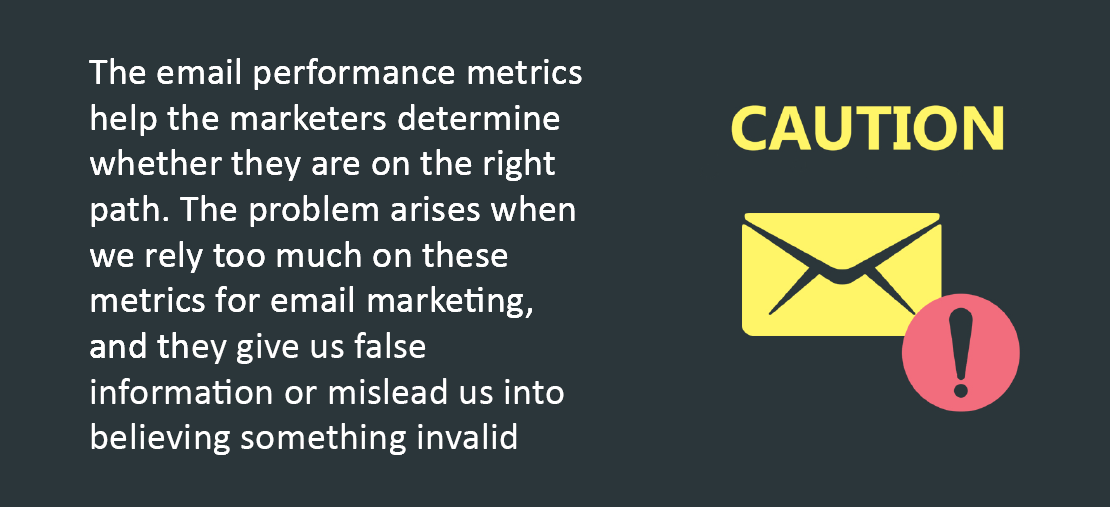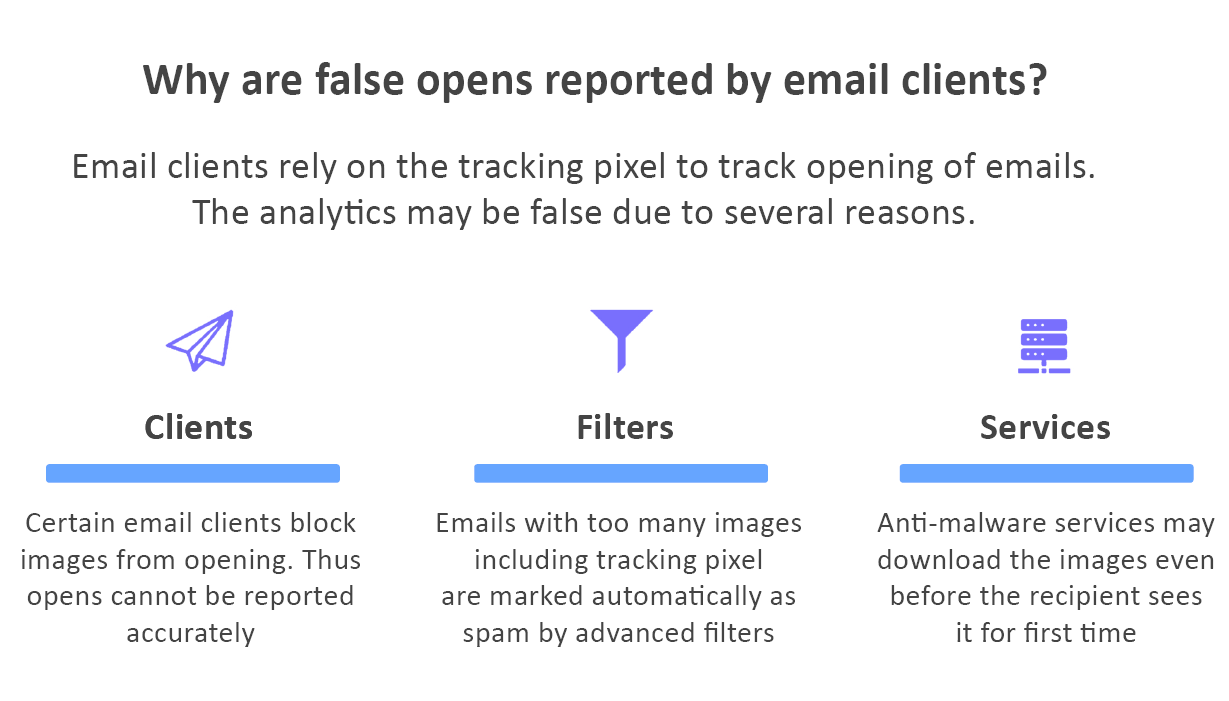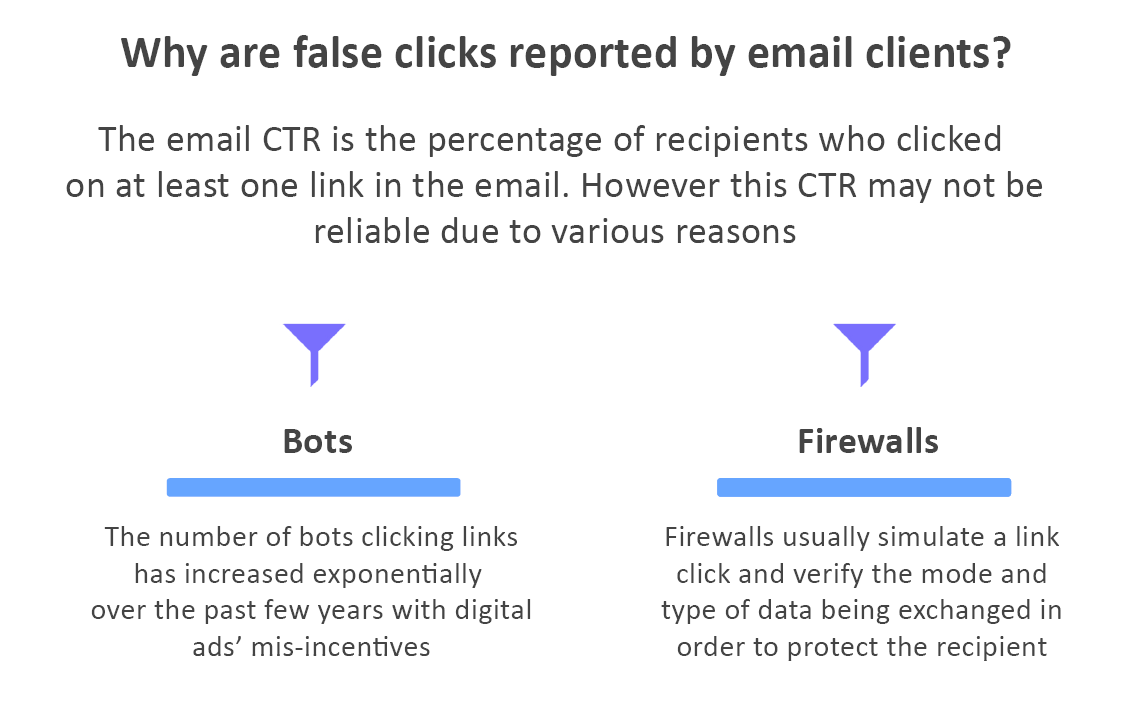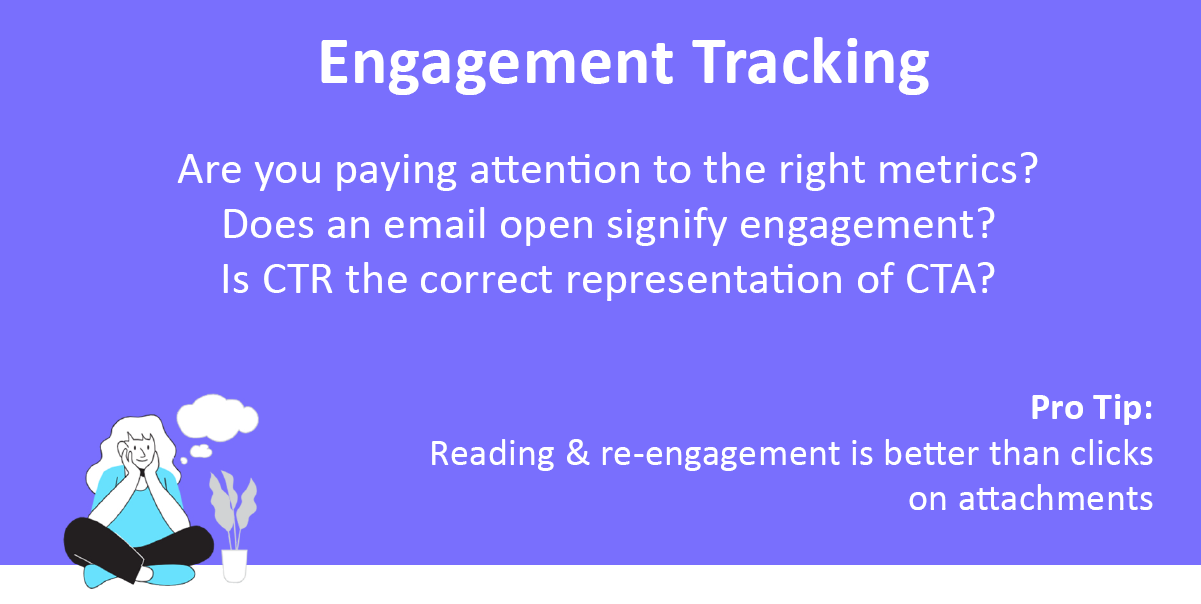Limitations of engagement metrics for email marketing

Digital marketing is on the rise since most businesses and consumers have shifted online. In particular, email marketing has been embraced by almost all marketers. Email marketing seems simple enough, but it takes time to master it. Every email marketing campaign is different in itself, with other goals and different target audiences. To determine the campaign's success and measure the results of your efforts, you need an objective criterion. This is where email engagement metrics come into play.

The email performance metrics help the marketers determine whether they are on the right path regarding the goals of their marketing campaigns. In addition, it gives them an indication of whether their strategy is working or if they need a course correction.
There are multiple email metrics to track the campaign's performance, and many more keep on evolving each day. However, there are specific basic metrics for email marketing analysis that every marketer should know to make better marketing decisions.
But again, the problem arises when we rely too much on these metrics for email marketing, and they give us false information or misleads us into believing something which is not valid. So let's understand some of the primary reasons behind why these email engagement metrics can go wrong.
False Opens
Open rate in email marketing is the most common metric to measure the effectiveness of a marketing campaign. But, there is an increasing realization among marketers that it has become an unreliable and misleading metric. Data suggests that your email opens and clicks are likely to be inflated by over 50%.

The open rate in email marketing simply means how many of your emails are opened by the recipients. But, often, it does not give you an accurate picture. Marketers notice a staggering number of fake opens, which provide inaccurate data to reach any meaningful conclusion. An open occurs when the recipient downloads a tracking pixel image in the email. Since it depends on downloading images, the data can become highly skewed. These are some reasons for it.
Email Clients
Email clients like Microsoft Outlook and many others disable or block images by default. Thus, these emails will not appear as opened even if the recipient opened them in their preview pane. In addition, a decrease in B2B open rates is likely in the future since more businesses opt for updated versions.
Spam Filters
Web clients like Gmail adopt advanced technologies to auto-spam emails with too many images, including the tracking pixel. Thus, it will get tougher to land into inboxes over time, and marketers must update their email strategy to account for these emails.
Email Protection Services
Anti-malware software such as Barracuda often open emails and download the images even before the recipient sees it. It leads to a false opening.
- Sometimes, the recipient reads the email in preview without downloading images. Thus, it cannot get tracked.
- Most of the emails are now read on mobile devices, and since mobile clients are different, that also skews results.
Therefore, false opens make it very challenging for businesses to estimate open rates accurately or gauge the cause of an increase or decrease in open rates, thus making email metrics to track data ineffective. The best way to go forward would be to not rely too much on open rates.
Instead, businesses should focus on email marketing best practices. Some of them are as follows:
- Develop engaging, quality content and keep few images in the emails.
- Put call-to-action above the fold in the case of mobile devices since nobody scrolls. Also, the call-to-action should lead to something trackable. For example, it can give you a near accurate estimate of recipients who paid attention to your email.
- Your content should be engaging for a technical audience since nobody is interested in conventional marketing-speak.
False Clicks
Click-through rate or CTR is another standard metric used by marketers. However, lately, they have realized that CTR is as unreliable as open rate as an email performance metric to track the performance of an email marketing campaign.

The email CTR is the percentage of recipients who clicked on at least one link in the email. However this CTR may not be reliable due to various reasons.
Bots
Even CTR is misleading because of the high volume of false clicks done by bots and not by the actual recipients. The number of bots clicking links has increased exponentially over the past few years. Moreover, these Spam bots indulge in many fraudulent activities on the web, like creating fake clicks on digital ads. Thus, these false clicks do not allow marketers to estimate the actual engagement with users online.
Firewalls
In addition to bots, firewalls further complicate the problem. Firewalls are a necessity for large business. One of the key protection services of many firewalls is to protect the users against harmful links that may try to download ransomware or other types of malicious content on the user's system. To protect against such attacks, firewalls usually simulate a link click and verify the mode and type of data being exchanged. Unfortunately for marketers, email tools detect this as link clicks, increasing the volume of false clicks and polluitjng the analytics.
How can marketers deal with this problem? One solution could be to use two filters. One to see whether the email was delivered to the targeted recipient and the other to see whether that recipient visited the page you referred to. It is an excellent way to gauge clicks that are real.
Another solution could be to use IP filters that will eliminate bots/anti-malware software from your reports, which will exclude all the emails being opened or clicked by bots.
Sender Reputation Problems
Sender reputation is one of the popular email campaign metrics, which is a score internet service providers assign to a business. It determines whether your email would reach the recipient's inbox or land directly in spam or promotions. Thus, maintaining a high email reputation score is a must for the success of your marketing campaign.

Multiple factors can lead to a low sender reputation score. For example, some recipients often report your emails as spam, a high bounce rate, or bad data. To improve your score, remove invalid addresses and keep your subscriber list clean, thus avoiding bounce emails.
Check your email domain reputation to see if your emails are reaching potential users. Tools and software like Sender score, Barracuda, and Talos intelligence can give you a rough estimate of your sender reputation in real-time.
Engagement tracking
Most often, digital marketers pay way too much attention to emails when the important thing is to track engagement. Your email campaign metrics are means to determine the utility of your marketing strategy. The pixel images will track only the opened emails, but engagement tracking will determine how much time the user has spent reading the email. Precisely, it is what we require.

Therefore, instead of focusing too much on open rate or CTR, the marketers should be tracking the actual calls to action. For example, did the recipients fill the form sent in the email? How many recipients downloaded the report sent to them? How many performed the email CTAs? These are the trends that you should be tracking.
Conclusion
Email marketing is here to stay, and so are the issues with email engagement metrics. Digital marketers need to be prepared for the constantly changing email marketing landscape. No doubt, it will be challenging to navigate this space by using conventional email marketing tactics. But, by following innovative best practices, you can still engage your target audience very well. Try sending personalized content, follow up with engaged users, keep your database clean and updated, and segment users whenever possible. Follow these tips, and you are good to go.